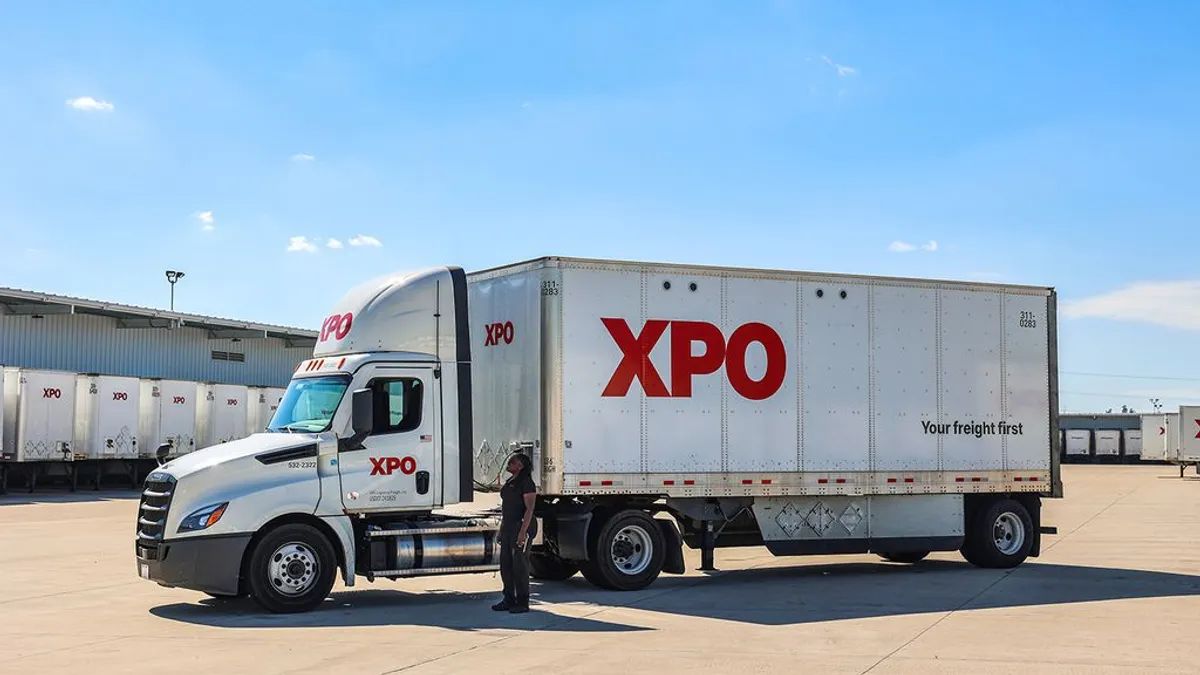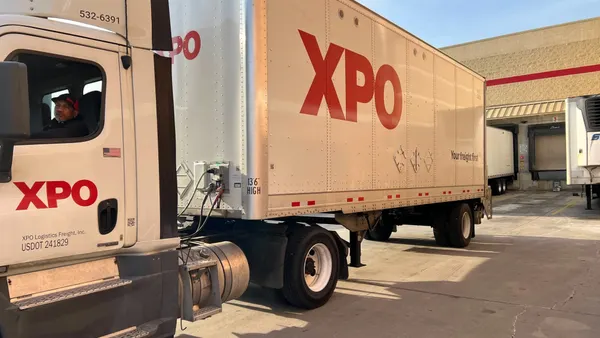Dive Brief:
- C.H. Robinson and SAS are bringing together their existing tools to combine demand planning and transportation procurement at retailers and manufacturers of consumer packaged goods, the companies announced Tuesday in a press release.
- C.H. Robinson has heard customer complaints that using an annual bid process for freight procurement can result in transportation contracts that become out of date as demand patterns shift, said C.H. Robinson Chief Commercial Officer Chris O'Brien.
- The goal of the partnership is to build what C.H. Robinson refers to as more "agile" freight procurement, which won't replace annual contracts but will rely on real-time demand data to shorten bidding windows and adjust them more frequently.
Dive Insight:
Contract rates for freight procurement are usually set annually and provide an agreed-upon rate between a shipper and carrier on a specific lane for a specified amount for volume. But if there's anything the pandemic has highlighted for retailers and manufacturers, it's that demand doesn't change at the pace of an annual contract.
This is where SAS' tools come into play.
"If you get the demand plan right, you increase the potential for getting everything else right in the supply chain," SAS noted in a 2016 video about its technologies. SAS said its inventory-forecasting tools allow companies to make changes based on local-level market shifts. It provides point-of-sale data, information on what's trending on social media and other information to generate these forecasts. Meanwhile, C.H. Robinson has access to real-time supply, demand and rate data related to transportation.
The combination of the two companies' databases and tools is meant to allow shippers to make decisions about freight procurement more quickly, O'Brien said.
"Let's say demand is going up and supply is going down. We want to rebid that freight," he said.
But while the ability to change freight procurement quickly could be beneficial to shippers, the alternative to annual bids is also complicated.
"The answer there is going to be complex," O'Brien said when asked about what the alternative contract environment would look like. "We don't think we're replacing the annual process. We think we're just making you have to rely on it less and be able to adjust it more frequently."
O'Brien said the demand signal data from SAS can help shippers drive conversations with carriers. If a shipper sees that demand on a given lane is set to double, then they can bring that information to the carrier sooner to figure out if the capacity is there.
"It's much easier to do it in advance proactively in that bid environment versus the blood in the water when you've gone to a spot bid," he said.
Chris Caplice, the executive director of the Massachusetts Institute of Technology Center for Transportation and Logistics and FreightLab, said his work and research with C.H. Robinson has shown a need for innovation in the area of agile freight procurement, according to a statement provided by the transportation company.












